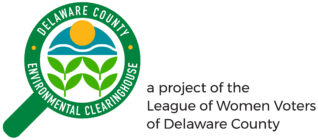EPA’s own AI declares climate change real, manmade
By Jean Chemnick | 06/05/2025 06:15 AM EDT E&E News by Politico
EPA has a new generative artificial intelligence tool. And it believes climate change is dangerous.
That puts it at odds with the Trump administration, which aims to sideline climate change research and data to make it easier to repeal regulations.
Closer to home, the AI tool threatens to provide answers that contradict the agency’s leader, Administrator Lee Zeldin, who is preparing to release a draft finding in the near future that contends greenhouse gases pose no risk to the public, as he tries to revoke the endangerment finding, a 2009 scientific declaration that underpins most EPA climate regulations.
The agency’s Office of Mission Support released the internal tool for staff May 22, saying in a memo obtained by POLITICO’s E&E News that it was intended to help “modernize the agency and gain new efficiencies.”
The office also set some rules for use, including telling staff not to “use the tool as the sole performer of an inherently government function or as the decisionmaker in any EPA activities,” and to check its answers for “accuracy and bias.”
“Recognize that output from the tool may be convincing, but it may be wrong,” said OMS, the agency’s administrative office.
The Trump administration has used AI heavily. But this particular tool was developed mostly under then-President Joe Biden, not President Donald Trump. EPA told E&E News that work on it began in the previous administration and a pilot tool was rolled out last autumn before it was made available to all staff last month.
Ann Dunkin, who served as chief information officer at the Department of Energy under Biden, said the fact the tool was for internal use and utilized only EPA data indicated that it was a Biden-era artifact.
“What the departments and agencies are trying to do is experiment with AI and figure out how it can help and how it can make people more productive. And that’s what’s going on here,” she said.
The Biden administration maintained inventories of AI tools, which showed 17 models in use at EPA last year.
The memo introducing the tool last month stated that it has “been in the works for some time.”
But the tool itself answered questions submitted by three agency employees, who were granted anonymity to avoid retribution.
It explained its own origin by stating that it was “developed by OpenAI, and it is integrated into Microsoft products and services, such as Azure OpenAI Service.”
Beth Simone Noveck, a professor of experiential AI at Northeastern University, said that seemed to indicate EPA had a contract with Microsoft for an AI language model that had been customized for use in agency work.
The tool’s views on climate science are conventional — if not always accurate. For example, one EPA staffer shared an exchange in which the tool appeared to say the power sector is the largest source of U.S. climate pollution. In fact, it’s second to transportation.
EPA is expected to soon argue as part of a regulatory rollback that U.S. power plants contribute too little carbon emissions to planetary warming to warrant regulation.
The AI tool is clear that heat-trapping pollution poses a threat to public health and welfare — a key aspect of a foundational EPA scientific conclusion, known as the endangerment finding — that underpins most climate regulations. Zeldin is expected to try to undo the finding soon.
The AI tool listed “extreme weather events,” vector-borne diseases, and food and water shortages among the threats posed by human-caused warming, in search results shared with POLITICO’S E&E News.
“Climate change is real and is supported by a vast body of scientific evidence,” it states in one answer. “It refers to significant and lasting changes in the Earth’s climate, particularly an increase in global temperatures, largely due to human activities such as burning fossil fuels, deforestation and industrial processes.”
Trump has rejected the basic tenets of climate change and is pursuing an energy agenda that promotes unfettered production of oil, gas and coal.
His administration has also doubled down on the use of AI as a governance tool. Elon Musk and Vivek Ramaswamy, who co-ran the so-called Department of Government Efficiency until both left the cost-cutting initiative, wrote in a November op-ed in The Wall Street Journal that they planned to use “advanced technology” to identify and kill rules that weren’t in line with recent Supreme Court decisions.
AI was also used in writing a recent Department of Health and Human Services report on U.S. life expectancy and is blamed for the report citing studies that don’t exist.
Other agencies are launching new AI tools right now. Noveck of Northeastern University said the U.S. Food and Drug Administration got one around the same time as EPA.
She said AI tools are good at weeding out jargon and translating regulatory text into plain language to make it more accessible and usable by people and businesses. But, she said, they are not a substitute for human judgment in policymaking.
“You cannot use these tools to replace humans,” Noveck said. “You need them to act as auxiliaries, as helpers, as assistants — effectively as a next generation of word processor.”
The HHS report had evidently not been reviewed for accuracy, she said.
“It’s irresponsible, it’s unprofessional, and it’s shoddy,” she added. “And when it comes to policies that affect the lives of millions of people, it’s immoral and unconscionable.”
Dunkin, the former DOE official, said the OMS rules for use also seemed to indicate that it was a Biden-era tool, despite making its debut under Trump.
“It doesn’t sound like a DOGE project, because those folks don’t believe in checking their work,” said Dunkin, who was EPA’s chief information officer during former President Barack Obama’s second term.
DOGE took over the existing U.S. Digital Service, a decade-old White House office, and from there gained access to agencies and their data. So
eal, manmade
